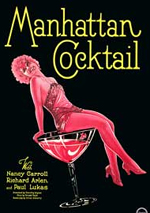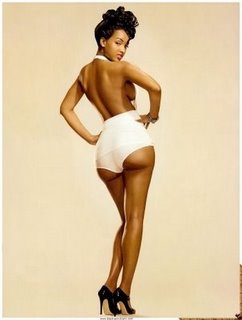A charming and generous friend recently told me–much to my surprise–that she sees my blog as a femme finishing school. I’m flattered, believe me (much love to you, charming and generous friend!), but the more I thought about it the more I realized that femme for me is a nonlinear process in which there’s no identifiable finish line to cross. I think this is one reason why you sometimes hear femmes say that femme is both something we are and something we do. (Actually, I’d love to hear butches talk about butch in this way, but this doesn’t seem to happen a lot. More on that some other time…)
As I’ve worked on this blog, I’ve moved away from thinking about femme in terms of a continuum or spectrum between degrees of femininity. I’ve learned that femme is too complex and varied to be defined primarily through a focus on quantity or intensity (e.g. whether you are “more” or “less” femme). One of my first posts “No, I’m not a lipstick lesbian (I just look like one)” represented an early effort to differentiate between the terms lipstick lesbian, femme, and high femme. It generated a really illuminating dialogue and prompted many of you to suggest other categories/terms such as earthy femme, queer femme, and chapstick femme. Since then, I’ve tried to complicate notions of femme identity in our discussions of femme style, the politics of femme pleasure, femme and consumerism, what it means to “transition” to femme, how butch and femme are not mutually exclusive categories, and being a stone femme.
This discussion–as well as conversations happening on other blogs–has helped me to expand and revise my thinking about femme and high femme. In my “No, I’m not a lipstick lesbian” post I talked about high femme as “ultra femininity,” but I now think this is a bit reductive. What’s most crucial for me about high femme as a separate gender identity from femme is not that it’s “more feminine” but that it’s a different kind of femininity that, generally speaking, privileges artifice over realness.
Here’s my new working definition of high femme; let me know what you think!
High Femme— Lesbian or queer gender marked marked by a highly stylized and aestheticized form of femme gender expression or identity. Uses exaggeration, artifice, and/or theatricality to denaturalize femininity. When combined with parody or irony, the effect achieved is akin to drag: femininity in quotes. No particular style of dress or external signifiers; may or may or may not wear dresses, heels, and/or makeup. May or may not be a “bottom” or a “top” in a sexual situation; may or may not partner with butches, studs, or stone butches. No particular personality traits. May be passive and demure or aggressive, independent, strong, etc. Not equivalent to a lipstick lesbian or stone femme. *
________________
*NOTE: In the future, I’d like to work on expanding and clarifying this definition even more, since high femme is shaped by class, racial/ethnic, and regional differences. For example, what’s high femme in LA might be different than high femme in Baltimore. Please let me know if you have thoughts on these issues. I also would be interested in hearing from people about the herstory of high femme. Most of us would probably agree that high femme in the 50s and 60s meant something different than it does today, but what exactly is that difference? It’s always good to start with what you know, so my definition above has a contemporary focus.
Stay tuned for Part 2 tomorrow!
Filed under: Lesbian & Queer Genders, Queer Femininity | Tagged: artifice, definition of high femme, denaturalizing femininity, femininity in quotes | 12 Comments »






